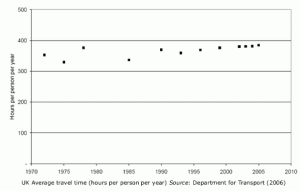With most business opportunities, it is possible to calculate the expected monetary benefits and costs, while considering other factors such as the opportunity cost of capital and project risk.A similar approach for transport infrastructure projects is also attractive. Just work out the benefits in today’s money, divide this by the cost and – presto! – you know exactly how much the economy will benefit from for every dollar spent.
Take the proposed Waterview motorway extension, for example. Treasury and Ministry of Transport officials have worked out that for every dollar spent on the $2.8bn motorway connection between Mt Roskill and Waterview, the economy will receive $1.15 worth of benefits.
In the business case document now being considered by Cabinet, officials point out that “full tunnel” option means that the benefits are only a little in excess of their costs. Some above ground options might save up to $200m from the construction cost, but these have higher social and environmental costs, and also involve the loss of park land and a significant number of houses.
Considering the billions of dollars at stake, one would hope that the economic benefits and costs of the various options are as accurate and as realistic as possible. So are they? Well, no, actually.
Since the 1960s it has been standard practice for the majority of roading economic benefits to be derived from travel time savings that road users can expect to enjoy. For the Waterview extension, maximum travel time savings of 15 minutes are expected. By placing a dollar value on each road user’s time, this equates to $2.6bn worth of claimed benefits.
The reality, however, is quite different. In the long run, an individual’s travel time savings are replaced by longer trips as travel patterns change. Commuters utilise the increased roading capacity by travelling further distances to work and leisure destinations. Eventually, the average amount of time individuals spend in traffic remains unchanged.
This is backed up by recent research from the UK based Centre for Transport Studies. By analysing the outcomes of nationwide travel surveys, their study found that average travel times in the UK have held constant at around an hour a day since the 1970s, despite expenditure of £100bn on roads over the last 20 years in the UK.
Of course it could be argued that had it not been for this massive investment, then average travel times would be much higher than they are currently. However, the study points out that there were marked swings in expenditure over the 20 year period, and hence new capacity becoming available. Throughout all of this, average travel times remained steady.
Here in New Zealand there are no comparable studies, but similar results have been documented in the Netherlands and the United States.
It would seem that promised travel time savings never eventuate in the long term, yet the myth of travel time savings also permeates into other areas. For Waterview, $690m of benefits are attributed to “reductions in frustration due to traffic congestion over and above the benefits gained from travel time savings.” How mental health benefits like this are quantified is not fully explained.
Vehicle operating cost savings of $40m are also claimed, the logic being that faster cars consume less petrol per kilometre. However, there is no evidence at all that households are spending any less on transport as a result of the completion of roading projects in recent years. The most recent Household Economic Survey in 2007 suggests transport constitutes 14% of expenditure for the average household, but no data is available to cover the subsequent period of high petrol prices.
It would seem that the long term benefits of increased road capacity come not from travel time savings, but rather from the increased choice of destinations for road users. Businesses also benefit from a greater catchment area of potential employees. For the Waterview extension, these “agglomeration” benefits could be as much as $607m, but this is still well short of the almost $3bn cost of the project.
An alternative method of estimating economic benefits is based on the user-pays principle. Transport officials have calculated that if the Waterview motorway extension was tolled at $2, then just 50% of motorists, or about 75,000 vehicles a day would consider it economically worthwhile to use the route instead of the existing alternative local roading network. It also follows that if Waterview were to operate as a private toll road, hapless investors would stand to lose about a billion dollars over a 30 year time frame.
A substantial economic risk also exists due to volatile oil prices. Petrol and diesel prices could well return to the record levels seen last year, yet the probability of this occurring does not feature in any economic assessment for Waterview or any other roading project currently on the drawing board.
Right now Cabinet Ministers must decide which one of twelve different options for the Waterview motorway extension makes economic sense. The only honest answer is that none of them do.

